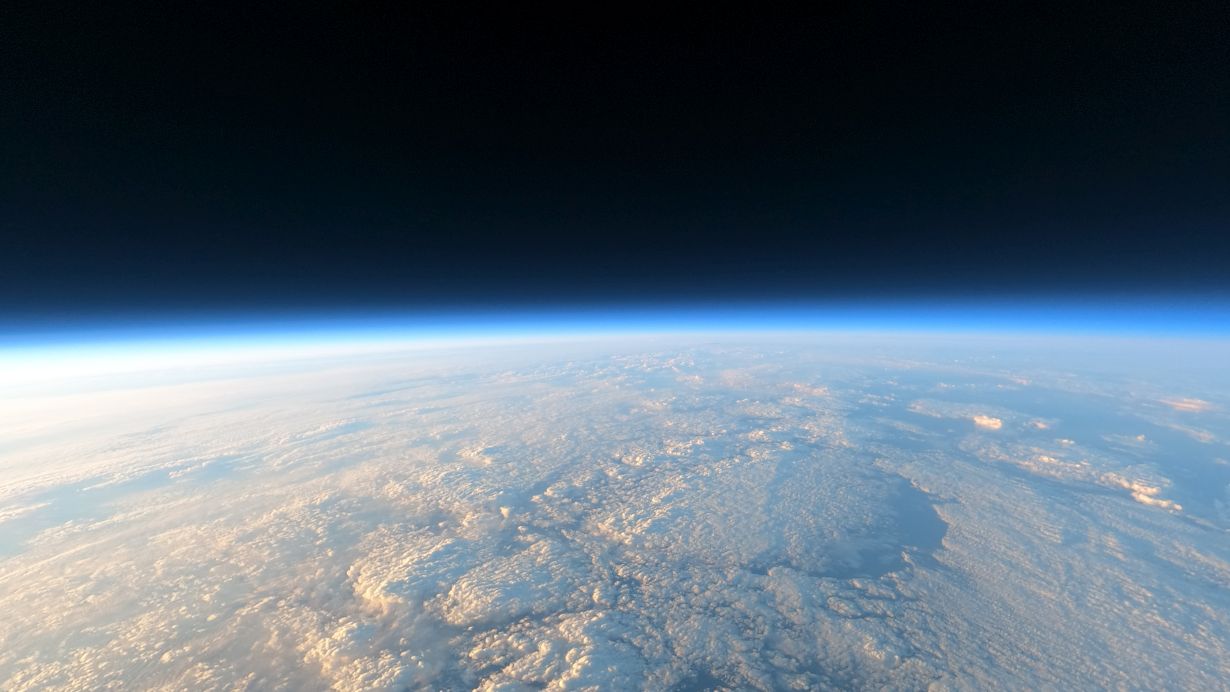
The CAIRT satellite mission is becoming increasingly likely. The European Space Agency (ESA) has now selected the concept, that was coordinated by Karlsruhe Institute of Technology (KIT), as one of two remaining candidates for an Earth observation mission. The final decision for implementation will be made in 2025.
ESA's decision to further pursue the CAIRT (changing-atmosphere infrared tomography) satellite mission as one of two projects was confirmed by the ESA Programme Board for Earth Observation on Tuesday (21.11.2023). "For us, this means that the mission is now entering Phase A - which makes our plans much more concrete," explains Professor Björn-Martin Sinnhuber from the Institute of Meteorology and Climate Research at KIT, who is coordinating the scientific work. "If ESA ultimately selects our proposal, we should be able to get data in the early 2030s." By then, CAIRT could be launched into orbit as the ESA Earth Explorer 11 satellite. The purpose of the mission is to obtain urgently needed data on changes in the Earth's atmosphere. These data are expected to improve understanding of the links between atmospheric circulation, the exact composition of the atmosphere and regional climate changes.
Space tomograph for the atmosphere
The centerpiece of CAIRT is an imaging infrared spectrometer to measure a large number of trace gases, aerosols and atmospheric waves with unprecedented spatial resolution. "We are familiar with tomography as a tool for medical diagnostics," says Sinnhuber. "Basically, the same thing happens here, just a bit bigger. It's a kind of space tomograph for the entire Earth's atmosphere." CAIRT will regularly measure the atmosphere at an altitude of five to 115 kilometers in the infrared range with a horizontal resolution of around 50 by 50 kilometers and a vertical resolution of one kilometer.
The planned mission builds on many years of experience in atmospheric remote sensing at KIT. In recent years, KIT researchers have already carried out pioneering work with remote sensing from balloons and airplanes. "Together with Forschungszentrum Jülich, we have developed the scientific instrument GLORIA, which can be seen as a kind of prototype for CAIRT," explains Dr. Michael Höpfner, who heads the research with GLORIA at KIT and is also involved in CAIRT. GLORIA has already made some great scientific observations, most recently new findings on the transport of aerosols after extensive forest fires in Canada during the PHILEAS measurement campaign with the HALO research aircraft, but on high-altitude balloons as well. "With the CAIRT satellite mission, we can take this to a new level because we will then receive global measurements on a daily basis," says Höpfner. (mhe)
About CAIRT
KIT coordinated the proposal for the satellite concept for the CAIRT mission, building on a longstanding joint initiative with the Forschungszentrum Jülich. The scientific objectives are defined and consolidated in close cooperation by an international panel of experts from the European Centre for Medium-Range Weather Forecasts (ECMWF), the Institute of Applied Physics "Nello Carrara" (IFAC) of the Italian Research Council, the Institute of Astrophysics of Andalusia (IAA-CSIC), the National Center for Scientific Research (CNRS) in France, the Royal Belgian Institute of Space Aeronomy (BIRA-IASB), the University of Leeds and the University of Oxford in the United Kingdom, the University of Oulu in Finland and the Finnish Meteorological Institute as well as the University of Toronto in Canada.
ESA Press Release "Cairt and Wivern Earth Explorer candidates go forward"
Further Information: https://www.cairt.eu/
Details on the KIT Climate and Environment Center
Being "The Research University in the Helmholtz Association", KIT creates and imparts knowledge for the society and the environment. It is the objective to make significant contributions to the global challenges in the fields of energy, mobility, and information. For this, about 9,800 employees cooperate in a broad range of disciplines in natural sciences, engineering sciences, economics, and the humanities and social sciences. KIT prepares its 22,300 students for responsible tasks in society, industry, and science by offering research-based study programs. Innovation efforts at KIT build a bridge between important scientific findings and their application for the benefit of society, economic prosperity, and the preservation of our natural basis of life. KIT is one of the German universities of excellence.






